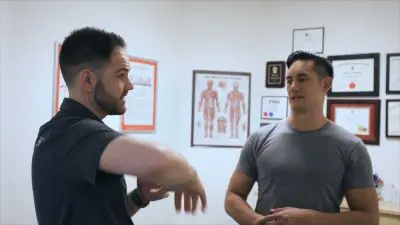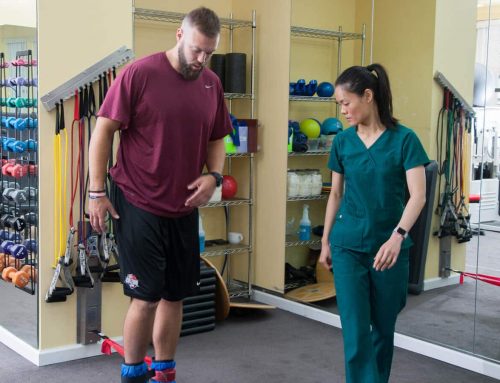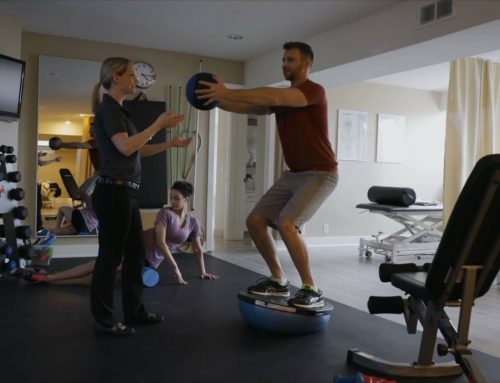
This happens to a lot of people, especially those who have jobs that require them to do repetitive motions… like typing on a computer, for example. People can also get it from the position of their hands while they sleep. It’s because this causes pressure on the median nerve – which is a long one, running the length of your arm and through a passage in your wrist called the carpal tunnel. Women tend to get it much more than men because they tend to have slimmer wrists and therefore smaller carpal tunnels.
If you have this, you will feel itching, burning or tingling in your hand and fingers. You will also have weakness and it will feel like shocks are moving up your fingers. Your arm may feel tingling running up and down it. It may start off fairly mild and shaking your hands may improve matters. As it progresses, it can make life miserable and even trying to hold a book may prove too challenging.
Many times patients are able to avoid surgery and are able to regulate their symptoms through physical therapy.
Here’s all you need to know about carpal tunnel.
Diagnosis
The first thing the doctor will have to do is ensure that you do, in fact, have carpal tunnel syndrome. They will examine your upper body – including your arms, hands, shoulders, and neck. This is so that they can see if there are telltale signs like swelling or tenderness or if any of those parts are discolored or are warm to the touch. Are you fingers numb? How about the strength of the muscles in those areas? They have to take all of those things into consideration before running tests to confirm that it is indeed carpal tunnel syndrome.
One test involves the doctor tapping your median nerve with a reflex hammer. This is called Tinel’s Sign (discovered by a French neurologist named Jules Tinel) and if you feel like an electric shock ran through your hand, you likely have carpal tunnel.
Another test is called Phalen’s Maneuver – you put the back of your hands together with flexed wrists and fingers pointed down. The doctor will have you stay like that for a minute or two. If your fingers get numb or tingle, the diagnosis of carpal tunnel will be confirmed.
The doctor may do something called a Two-Point Discrimination Test. It’s to see if you can distinguish between one or two points from two separate objects that are touching as being from two different things rather than feeling like it’s just from one point.
Other tests include Nerve Conduction Velocity, which measures the speed of an electric signal along a nerve, and an Electromyogram, which can tell if your median nerve is damaged. Ultrasounds, X-Rays, and MRIs can also play a big part in showing whether you have carpal tunnel or not.
Once the diagnosis has been confirmed, then it’s time to move to the next step – treatment.
Self-Care
Ideally, you would be able to stop doing what is causing the problem, but that is not always the case. Your work requires it too much. So.. the next step is managing it. Some people may say that they can regulate it through doing self-care, which includes icing their wrist or putting their hand in warm water. They can take pain medication like aspirin, ibuprofen, or naxopren.
A brace can play a big part in helping manage the carpal tunnel pain. It keeps your wrist in a proper position to prevent any nerve damage.
Taking corticosteroids is also a possibility, since they lessen swelling. It’s not something that’s sustainable over the long run.
Some people try yoga, ultrasound therapy or even acupuncture. There are mixed results, with none pointing to being a definitive route to managing carpal tunnel syndrome.
Changing up the work routine may be a possibility. Take breaks to allow your hands to rest can be very good or maybe even alternate which hand you use for work. Still, there may be a need for professional help.
Physical/Occupational Therapy
When you see the physical or occupational therapist, they will see if they can help you in a variety of ways. After all, you need to use your hands and wrists for different things, right?
The therapist can help you strengthen the muscles in your hand so that the effects won’t be that bad. They may also show you particular stretches to loosen hand and wrist muscle which can also lessen the severity of the carpal tunnel syndrome.
If any of the above do not do the trick, there’s usually one other option left:
Surgery
This is usually the last resort. A doctor will widen the path of the carpal tunnel so that the median nerve won’t be affected.
As you can now see, being diagnosed with carpal tunnel syndrome does not mean that your life will be completely upended. If you are worried that you might have it, talk to your doctor. Then you can take the necessary steps to resuming your life.
The staff at Empire Physical Medicine and Pain Management know just how devastating the effects of carpal tunnel syndrome can be on one’s work and personal life. They will help the patient rehabilitate their condition to the best of their abilities. Many people have benefited from their expertise. Call to make an appointment and find out what they can do for you: 646-665-7109.
Published By:
Empire Physical Medicine & Pain Management
7 W 45th St floor 9,
New York, NY 10036
Phone: (646) 665-7109
Website: https://manhattanpainrelief.com





